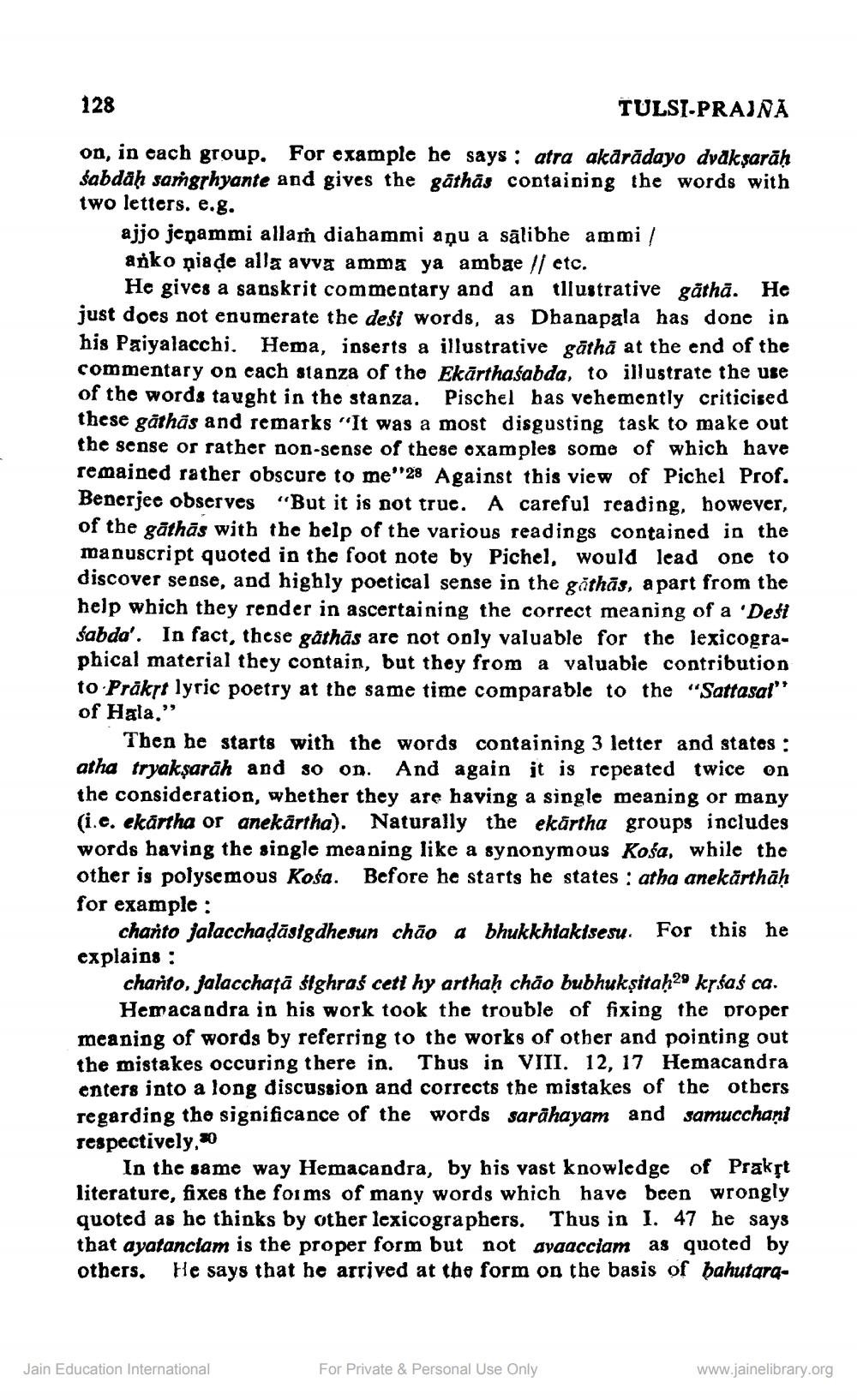________________
128
TULSI.PRAJNA
on, in each group. For example he says : atra akarādayo dyaksarāḥ sabdah samgrhyante and gives the gåthâs containing the words with two letters. e.g.
ajjo jepammi allam diahammi aņu a salibhe ammi! anko piade alla avva amma ya ambae // etc.
He gives a sanskrit commentary and an tllustrative gåthā. He just does not enumerate the desi words, as Dhanapala has done in his Paiyalacchi. Hema, inserts a illustrative gāth, at the end of the commentary on cach stanza of the Ekārthasabda, to illustrate the use of the words taught in the stanza. Pischel has vehemently criticised these găthấs and remarks "It was a most disgusting task to make out the sense or rather non-sense of these examples some of which have remained rather obscure to me''28 Against this view of Pichel Prof. Benerjee observes "But it is not true. A careful reading, however, of the găthās with the help of the various readings contained in the manuscript quoted in the foot note by Pichel, would lead one to discover sease, and highly poetical sense in the găthās, a part from the help which they render in ascertaining the correct meaning of a 'Dest sabda'. In fact, these gåthās are not only valuable for the lexicographical material they contain, but they from a valuable contribution to-Präkst lyric poetry at the same time comparable to the "Sattasa!" of Hala."
Then he starts with the words containing 3 letter and states : atha tryakşarāh and so on. And again it is repeated twice on the consideration, whether they are having a single meaning or many (i.c. ekartha or anekartha). Naturally the ekārtha groups includes words having the single meaning like a synonymous Kośa, while the other is polysemous Kośa. Before he starts he states : atha anekārthāḥ for example:
chanto jalacchadāsigdhesun chão a bhukkhlakisesu. For this he explains :
chaňto, jalacchatā stghraś cett hy arthaḥ chão bubhukṣitaḥ29 kršaś ca.
Hemaca odra in his work took the trouble of fixing the proper meaning of words by referring to the works of other and pointing out the mistakes occuring there in. Thus in VIII. 12, 17 Hemacandra enters into a long discussion and corrects the mistakes of the others regarding the significance of the words sarāhayam and samucchani respectively, *
In the same way Hemacandra, by his vast knowledge of Prakt literature, fixes the forms of many words which have been wrongly quoted as he thinks by other lexicographers. Thus in l. 47 he says that ayatanciam is the proper form but not ayaacciam as quoted by others. He says that he arrived at the form on the basis of bahutara
Jain Education International
For Private & Personal Use Only
www.jainelibrary.org




